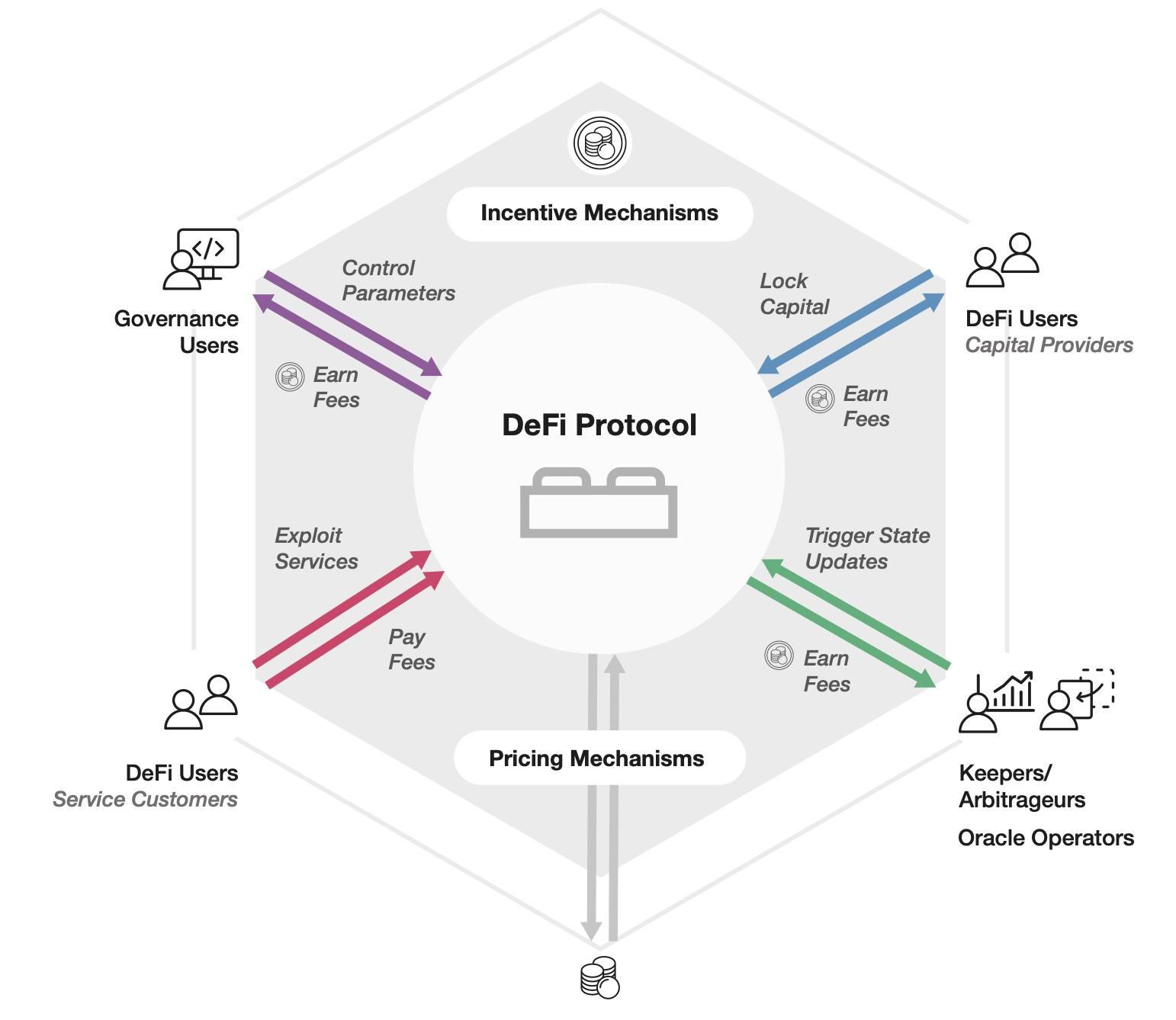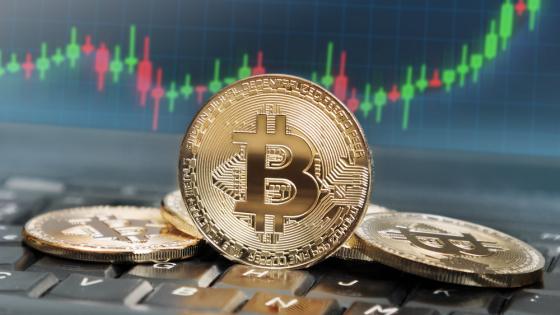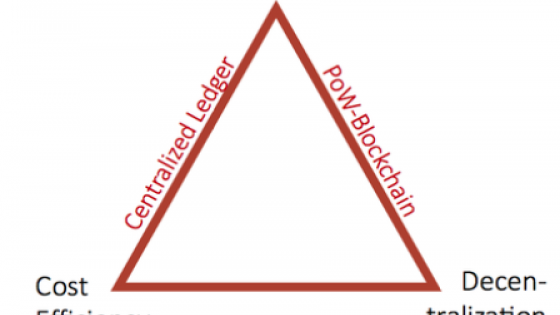Decentralised finance (DeFi) is a new financial paradigm that utilises Ethereum and other distributed ledger technologies (DLTs) to offer financial services such as trading, lending, or investing, without relying on a traditional centralised financial intermediary.
It is still unclear to what extent DeFi will proliferate. Cryptocurrencies are inherently unstable and pose challenges to regulators (Papsdorf et al. 2022). In addition, decentralised applications come with a trade-off over cost-efficiency and correctness of records (Brunnermeier and Abadi 2018). Today, even most cryptocurrency trading happens on centralised crypto exchanges, which does not constitute DeFi (Aramonte et al. 2021, Auer et al. 2022). However, DeFi’s technology might still influence the future financial ecosystem. Its innovation can be traced back to three fundamental characteristics, which are of interest well beyond cryptocurrency markets. First, algorithmic automation might reduce inefficiencies and foster transparency. Second, ‘DeFi compositions’ allow the combination of several DeFi services in one transaction to offer novel, complex, and deeply nested financial products. Third, if complemented with the existing infrastructure, it can provide new forms of openness for the financial system.
Interest in DeFi rose sharply in 2020 and, during its peak in 2021, the total amount of funds invested in it (the total value locked, or TVL) exceeded $150 billion.
Despite this, understanding its risks and potential remains a challenge. Among others, DeFi introduces enormous technological and economic complexity that makes interpretation, evaluation, and risk assessment of its underlying financial products increasingly difficult (Kitzler et al. 2022).
In this column, we draw on Auer et al. (2023) to define DeFi, explain the fundamentals and functions of DeFi, and introduce the DeFi stack reference (DSR) model. This model breaks down the DeFi ecosystem into three layers: (1) the settlement layer, which describes the core technical features of distributed ledger technologies; (2) the application layer, which includes smart contracts for providing financial services; and (3) the interface layer, which offers user interfaces like web pages or applications. We then discuss how the economic significance of crypto and DeFi markets can be measured.
What is decentralised finance?
Auer et al. (2023) define DeFi as a competitive, contestable, composable, and non-custodial financial ecosystem built on technology that does not require a central organisation to operate and that has no safety net. It consists of financial protocols, implemented as ‘smart contracts’, running on a network of computers to automatically manage financial transactions. Thus, it does not require banks or other traditional centralised intermediaries. Miners, or validators, compete to process and settle transactions in return for a reward. Users can choose from different financial protocols these are (1) contestable, as anyone can deploy a new protocol, copy the source code of an existing one, or even start a new ledger, (2) composable as basic services can be assembled into complex services, and (3) non-custodial as users can keep asset custody when accessing financial services. DeFi does not come with any safety net as it lacks protection from criminal conduct or investor fraud and erroneous transactions cannot be undone.
At the time of writing, Ethereum is the main distributed ledger technology for DeFi, both in terms of volumes transferred and user base. However, multiple distributed ledger technologies with different technical features and designs allow to devise and offer DeFi services.
The DeFi stack reference model
Figure 1 shows the DeFi stack reference (DSR) model. Building on Schär (2021), it conceptualises the DeFi ecosystem in three layers: the settlement, application, and the interface layer. Each layer uses functionality provided by the one beneath and offers functionality to the one above.
- The settlement layer forms the core technical features DeFi builds upon. In other words, this layer comprises the distributed ledger technologies like Ethereum, that allow to implement smart contracts, and thus to offer DeFi services. The core technical aspects are, for instance, the consensus mechanism (e.g. proof-of-work or proof-of-stake), or how smart contracts are executed.
- On top of this, the application layer consists of smart contracts that allow new cryptoassets to be issued and transferred, or the financial functions to provide DeFi services to be encoded, for example to lend or exchange different cryptoassets. The ‘token contracts’ typically carry a name (e.g. Tether) and a symbol (e.g. USDT). DeFi protocols exploit such cryptoassets to provide higher-level financial services. A DeFi protocol is a set of smart contracts that provides one or more financial services to their users. Uniswap, for instance, is a DeFi protocol that allows the exchange of cryptoassets.
- The interface layer includes front-end interfaces, such as web pages or applications, that facilitate the user interaction with the underlying smart contracts.
Figure 1 A DeFi stack reference (DSR) model
The economics of the ‘peer-to-pool’ model
The most relevant DeFi protocol categories are decentralised exchanges, lending protocols, and
derivatives protocols. They respectively allow exchanging cryptoassets, to lend and borrow them, and to issue and trade cryptoassets derivatives.
As Figure 2 shows, DeFi users do not interact with other users, but with a smart contract that pools other users’ assets – hence the name ‘peer-to-pool’ model. This model describes how different economic agents interact with the DeFi protocols. For instance, trading in DeFi is often executed by interacting with an automated market maker (AMM). Many customers independently deposit their liquidity to a smart contract, the AMM, that manages a pool of tokens. Other users can buy a token previously deposited by selling another token. This transaction is done directly with the smart contract, rather than with another user. Depositors earn a fee for providing liquidity, traders pay a fee for demanding it (Xu et al. 2023).
Furthermore, by design, distributed ledger technologies like Ethereum enable the interaction of multiple smart contracts within one individual transaction. Smart contracts can interact with each other, like ‘financial lego’, and form complex financial services. A ‘DeFi composition’ provides novel financial services by utilising a combination of smart contracts developed by different DeFi protocol teams. Indeed, no technical constraint prevents a developer from creating new smart contracts that exploit functionalities of a smart contract provided by another DeFi protocol. For instance, 1inch is a DeFi service that searches for the best trading price across different DeFi exchanges. To do so, 1inch smart contracts interact with other DeFi protocols, like Uniswap or Sushiswap. Such services are called aggregators and implement automated portfolio optimisation strategies.
Figure 2 The peer-to-pool model
Examining the economic significance of DeFi and cryptoassets: Project Atlas
The rapid growth of DeFi and cryptoasset markets has led to a pressing need for a deeper understanding of their macroeconomic impact and potential risks. For example, Graf von Luckner et al. (2021) use data from two small, centralised peer-to-peer Bitcoin markets to investigate cross-border flows. Furthermore, DeFi is increasingly entangled with the traditional financial system (Financial Stability Board 2022): the recent bankruptcy of Silicon Valley Bank (SVB) caused the de-pegging of the stablecoin USDC from its reference asset, the US dollar, as about 8% of the total USDC reserves were held at SVB (Techcrunch 2023). As demonstrated by the recent Solana outages, technical vulnerabilities might also disrupt DeFi’s functioning (Cointepegraph 2023).
Researchers and policymakers are seeking reliable data and insights to help them navigate these complex ecosystems. Data collection relies on two categories: data from the distributed ledgers and data reported by market actors. Surprisingly, figures on basic indicators such as market size and usage are often unreliable. Cong et al. (2023) show that centralised exchanges manipulate trading volumes via wash trading, in particular in the absence of regulation. Data differ widely across sources and warrant further probing.
In response to these issues surrounding crypto data, Project Atlas has been established to create an open-source data platform that delves into the macroeconomic significance of cryptoasset markets and DeFi (Bank for International Settlements 2023). The project addresses existing gaps in transparency and understanding of these emerging financial ecosystems.
By combining on-chain and off-chain data, the platform will provide reliable insights into market capitalisation, economic activity, and international flows of cryptoassets based on a clear methodology. The initial focus of Project Atlas is on mapping blockchain transactions to crypto exchanges and their geographic locations, allowing the visualisation of cross-border flows worldwide. Figure 3 shows net flows in Bitcoin between exchanges derived from blockchain data. Attributing geographic locations to crypto exchanges (where possible) lays out the structure of cross-border flows and provides a starting point for evaluating the relative economic significance across jurisdictions. For example, in 2022 US-based crypto exchanges had net inflows of Bitcoin with a value of more than $1 billion. Many crypto exchanges are located in smaller jurisdictions which affects cross-border flows. For example, exchanges based in Seychelles experienced larger outflows of Bitcoin.
Figure 3 Net Bitcoin flows between exchanges in 2022
Notes: The source is BIS Innovation Hub Project Atlas. Cryptoasset addresses are pseudo-anonymous and the full set of addresses controlled by exchanges are unknown. Estimates are a lower bound based on available attribution data given uncertainty in identification. The location of crypto exchanges is based on their geographic location. For a number of crypto exchanges, no main geographic location could be identified. The use of this map does not constitute, and should not be construed as constituting, an expression of a position by the BIS regarding the legal status or sovereignty of any territory or its authorities, the delimitation of international frontiers and boundaries and/or the name and designation of any territory, city, or area. The circles represent Antigua and Barbuda, Hong Kong SAR, Seychelles, and Singapore. Based on preliminary data for the period Jan–Dec 2022.
By deriving meaningful indicators on crypto and DeFi markets and making them easily accessible through dashboards, Project Atlas strives to enhance policymakers' knowledge and central banks' analytical and technical capabilities. A comprehensive understanding of DeFi and its layers combined with a sound understanding of the data can improve informed decision-making concerning financial risks.
References
Aramonte, S, W Huang and A Schrimpf (2021), “DeFi risks and the decentralisation illusion”, BIS Quarterly Review 21.
Auer, R, M Farag, U Lewrick, L Orazem and M Zoss (2022), “Banking in the shadow of Bitcoin? the institutional adoption of cryptocurrencies”, BIS Working Papers Nr. 1013.
Auer, R, B Haslhofer, S Kitzler, P Saggese and F Victor (2023), “The Technology of Decentralized Finance (DeFi)”, CEPR Press Discussion Paper No. 18038.
Bank for International Settlements (2023), “Project Atlas: Mapping the world of decentralised finance”, BIS Innovation Hub Projects, Web page.
Brunnermeier, M and J Abadi (2018), "The economics of blockchains", VoxEU.org, 17 July.
Cointelegraph (2023), “Solana outage triggers ballistic reaction from the crypto community”, Press article, 27 February.
Cong, L, X Li, K Tang and Y Yang (2023), "Wash trading in centralised crypto exchanges: The need for transparency and accountability", VoxEU.org, 17 April.
Financial Stability Board (2022), “Assessment of Risks to Financial Stability from Crypto-assets”, Technical Report to the G20.
Graf von Luckner, C, C Reinhart and K Rogoff (2021), "Decrypting New Age International Capital Flows", NBER Working Paper No. 29337.
Kitzler, S, F Victor, P Saggese and B Haslhofer (2022), “Disentangling Decentralized Finance (DeFi) Compositions”, ACM Transactions on the Web (TWEB).
Papsdorf, P, J Schaaf and U Bindseil (2022), "The Bitcoin challenge: How to tame a digital predator", VoxEU.org, 7 January.
Schär, F (2021), “Decentralized Finance: On Blockchain-and Smart Contract-based Financial Market”, FRB of St. Louis Review.
Techcrunch (2023), “SVB’s mess could become stablecoins’ problem”, Press article, 13 March.
Xu, J, K Paruch, S Cousaert and Y Feng (2023), “SoK: Decentralized Exchanges (DEX) with Automated Market Maker (AMM) Protocol”, ACM Computing Surveys 55(11): 1-50.










